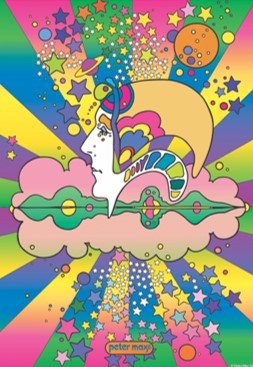Rick Griffin
Rick Griffin (1944–1991) was an American artist and illustrator, best known for his work in the counterculture and underground comix movements of the 1960s and 1970s. He was born on June 18, 1944, in Los Angeles, California, and passed away on August 18, 1991, in Petaluma, California.
Griffin initially gained recognition for his psychedelic poster art, particularly for bands associated with the San Francisco music scene, such as the Grateful Dead and Jefferson Airplane. His distinctive style often featured intricate lettering, vibrant colors, and surreal imagery, capturing the spirit of the psychedelic era.
In addition to his poster art, Griffin was a contributor to various underground comix, including Zap Comix and The Fabulous Furry Freak Brothers. He also worked on album covers, creating iconic designs for musicians like Jimi Hendrix and the Grateful Dead.
Griffin's art reflected the countercultural and spiritual movements of the time, drawing inspiration from surf culture, mysticism, and his own experiences. His work continues to be influential, and he is remembered as one of the key artists of the psychedelic and underground art scenes in the 1960s and 1970s.












































